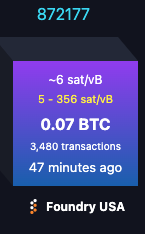How is Bitcoin Data read?
Bitcoin operates on a unique system of alphanumeric data types that underpin its functionality, from transactions to addresses and blocks. Each serves a specific purpose and follows distinct patterns, making it easier to identify and work with them.
Addresses
Bitcoin addresses are used to receive bitcoin and are the most commonly encountered data type for users. They come in different formats, each with unique prefixes:
- “1…”: These addresses, often used for P2PKH transactions, are the most common and are based on a hashed public key. They use Base58 encoding.
- “3…”: Associated with P2SH transactions, these addresses may represent nested SegWit or multisig setups. They also use Base58 encoding.
- “bc1…”: Native SegWit addresses, offering the most efficient fee savings, encoded using Bech32 and using only lowercase letters.
- Caution: Addresses starting with “2” are testnet addresses for tBTC and should not receive real bitcoin. The Bitcoin Wallet Address of Satoshi Nakamoto: 1A1zP1eP5QGefi2DMPTfTL5SLmv7DivfNa A nowaday common SegWit Adress: bc1qye9f62lnzav4znw2elxax68a55sugwfpy704dn
Public Keys
Public keys are less visible today, as addresses typically replace them for receiving bitcoin. However, they are still used for advanced functions like verifying signatures or multisig setups:
- “02…” or “03…”: Standard compressed public keys used for various cryptographic tasks.
- “xpub…”, “ypub…”, or “zpub…”: Extended public keys (xpubs) used to derive multiple addresses in HD wallets. Sharing these can expose your entire wallet history. At Services like Bittr xpubs can be used to receive Bitcoin everytime to a different Bitcoin address to protect your Privacy. A Bitcoin extended public key (xPub): xpub6CUGRUonZSQ4TWtTMmzXdrXDtypWKiKrhko4egpiMZbpiaQL2jkwSB1icqYh2cfDfVxdx4df189oLKnC5fSwqPfgyP3hooxujYzAu3fDVmz
Blocks
Blocks represent groups of transactions and are identified by their height and hash:
- Block Height: The sequential number of a block, starting at 0. Most block heights are now six digits.
-
Block Hash: A unique identifier derived from the block’s data, often starting with many zeros to meet the Proof-of-Work requirements. The number of zeros reflects mining difficulty at the time.

A Bitcoin Block mined by Foundry USA. At Mempool.Space you can see all the transactions the block contains: https://mempool.space/block/0000000000000000000200f003e4a6437174ddbefbe4a6358c24cc9c938973c4
Transactions
Transactions link bitcoin senders and receivers. They are identified by a unique Transaction ID (txid):
- Txid: A 64-character alphanumeric string derived from hashing the transaction data.
- Transactions don’t have the leading zeros seen in block hashes, which helps differentiate them.
Signatures
Bitcoin signatures are cryptographic proofs validating transactions:
- They are between 71-73 bytes long, encoded in DER format, and always start with ‘30’.
- Inside a signature, ‘02’ prefixes identify the R and S values.
Final Thoughts
- Bitcoin data includes addresses, public keys, blocks, transactions, and signatures.
- Addresses start with 1, 3, or bc1
- Blocks are identified by their height and hash

